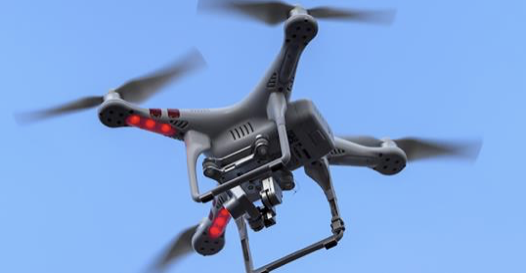Drones, or unmanned aerial vehicles (UAVs), are aircraft predominantly operated by remote control. They were initially created to complete tasks that were too dangerous or unable to be completed by humans.
The first documented use of Drones was in 1839. Austrian soldiers used unmanned balloons with explosives inside to attack Venice. Since then, drone technology has been primarily used in military applications until 2006 when the FAA issued the first commercial drone permits in the United States.
Drone technology didn't become a sensation until 2013 when Jeff Bezos announced Amazon planned to use drones for deliveries. This sparked intense interest from the public (if it's good enough for Amazon, I might try it!).
As the technology rapidly advanced, drones have become increasingly affordable, allowing drone manufacturers to enter the consumer market. As ubiquitous as tablets and computers, drones are on many people's Christmas wishlist - and who doesn't like the idea of taking a bird's eye perspective of your immediate environment?
However, there's still a lot of resistance to the use of drones, especially those that are used for surveillance purposes as people have fears regarding their privacy.
The purpose of surveillance drones is to monitor selected targets by taking continual pictures and video. These targets can be people, groups or environments.
- In a military capacity, drones are used by governments to gain intelligence about their enemies.
- An example of a commercial application is the use of surveillance drones by private investigators to monitor targets.
Below is a list of the pros and cons of using drones for surveillance purposes.
PROS:
- Drones are lifesavers: Search and rescue teams use them to scour large areas of land or water searching for missing people. They're faster and can go places humans can't.
- Police Surveillance: Police use them to monitor suspicious people and places in place of the old ‘stake out’, in which officers camped out in their cars and/or motels for days.
- Environmental surveillance: Researchers can monitor ecological areas of concern to gather data for analysis to help find solutions to environmental problems.
CONS:
- Privacy: Drones are unobtrusive and can collect data without alerting anyone to what they are doing. Collecting data without the knowledge of the intended target can be deemed a breach of their right to privacy.
- Legislation: Due to the constant technological advancements, legislation has yet to catch up to this disruptive technology, such as that surrounding air space property rights.
- Safety: Drones have flown into the flight paths of other aircraft, creating the potential for mid-air collisions.
Drones aren't good or bad. They're just a tool we use to suit our own needs. Unfortunately, they're misused by some. But we need to objectively about whether this misuse outweighs the potential for good the technology can deliver.
With their increasing capabilities and cost-efficiency, we'll likely be using drones for some time to come. It's vital legislation catches up and puts measures in place to restrict their flagrant abuse of privacy. In the future, there's no reason why we can't maximise the benefits of surveillance drones while making sure we don't infringe on the privacy of others.

